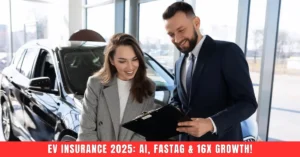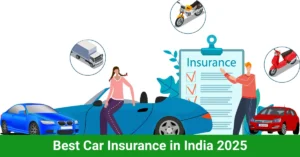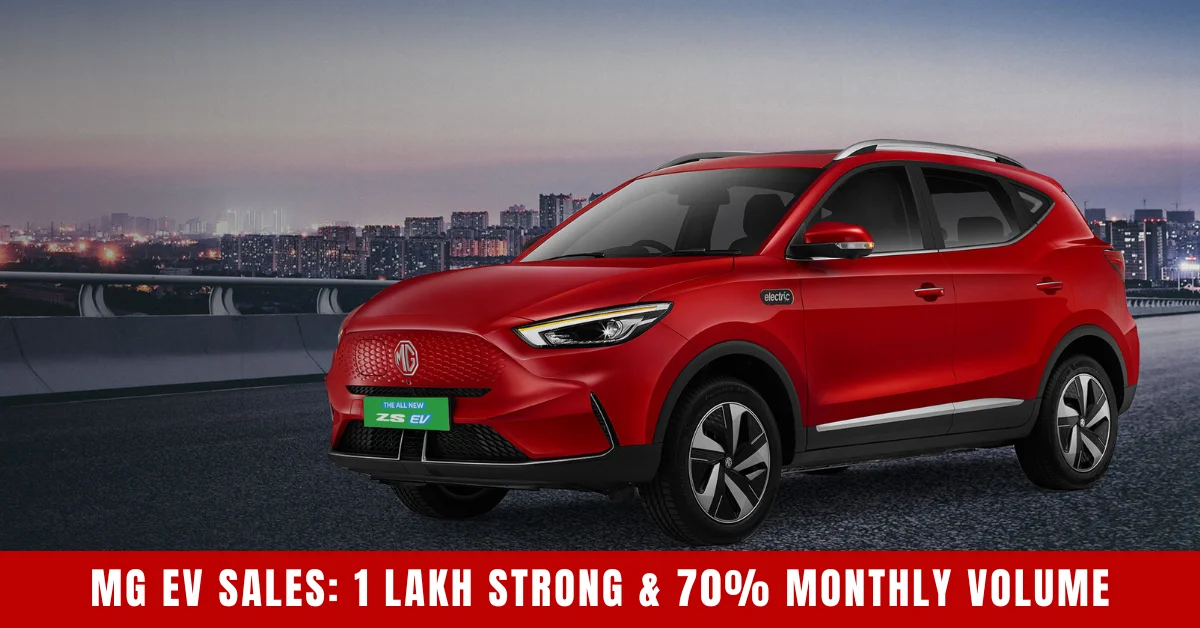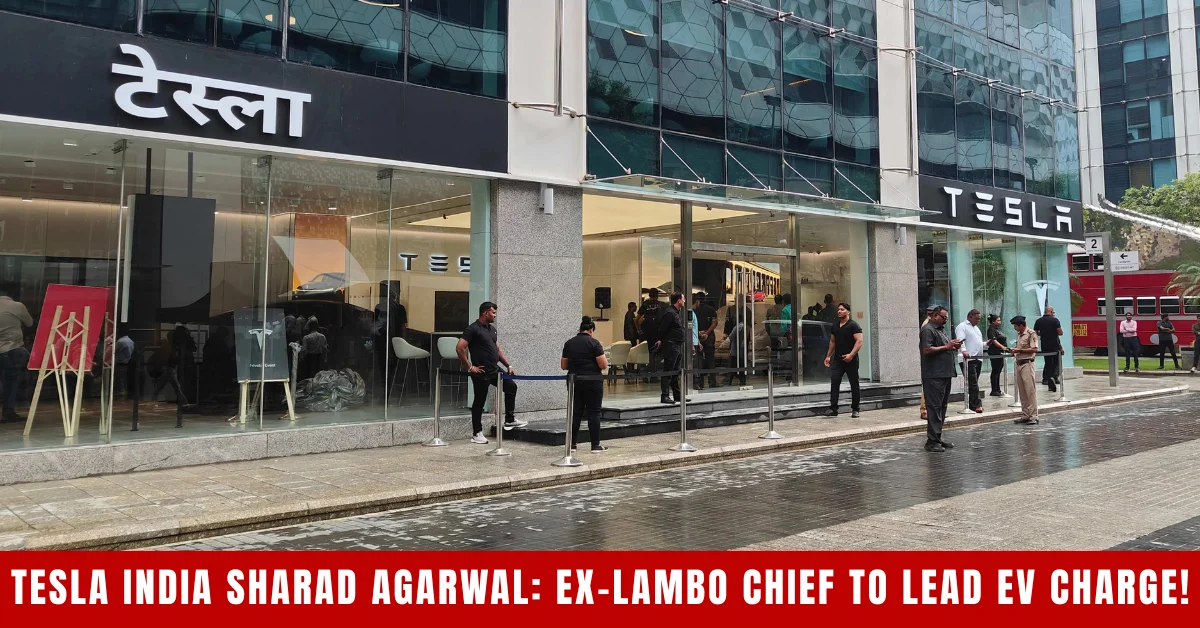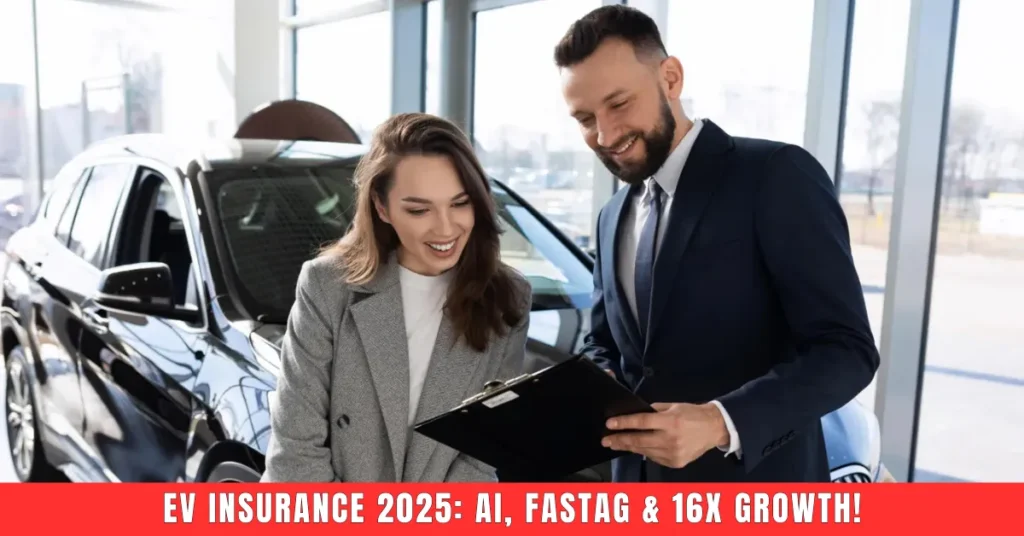
Overview
- Explosive Market Growth: EV insurance demand in India has surged 16x in just three years, rising from 0.5% of total policies in FY23 to 14% in FY25, with over 8.2% already recorded in FY26’s first half.
- Battery-Centric Add-Ons: With batteries accounting for 40–60% of EV value, specialized covers like battery protection, charger theft, and software security are now essential and widely adopted.
- Smart Usage-Based Models: Pay-As-You-Drive (PAYD) and Pay-How-You-Drive (PHYD) policies use telematics to reward low-mileage and safe drivers, promoting eco-conscious behavior.
- AI-Driven Personalization: Insurers leverage AI to analyze driving patterns, offer green energy discounts, and deliver proactive maintenance alerts for faster, tailored claim settlements.
- Regulatory & Tech Integration: Government-backed battery-swapping policies and proposed FASTag expansion for charging, parking, and insurance payments streamline EV ownership.
- Metro Dominance: Over 55% of EV policies are purchased in Delhi-NCR, Bengaluru, Chennai, and Pune, reflecting urban adoption trends.
- Future-Ready Protection: Emerging add-ons target motor burnout, sensor damage, and water ingress—critical for high-acceleration EVs with sensitive electronics.
The Future of EV Insurance in India: A Rapidly Evolving Landscape
India’s automotive sector is witnessing a seismic shift toward electric mobility, and alongside the rise of EVs on roads from metropolitan boulevms to tier-2 towns, a parallel revolution is unfolding in the insurance industry. EV insurance in India is no longer a niche segment—it’s a high-growth, tech-driven ecosystem reshaping how vehicles are protected, priced, and serviced. Unlike traditional internal combustion engine (ICE) vehicles, EVs introduce unique risks and components: high-voltage lithium-ion batteries, intricate electronic control units, and over-the-air software updates. These elements demand specialized coverage, smarter pricing models, and deeper integration with charging infrastructure.
As EV adoption accelerates—fueled by government incentives, falling battery costs, and expanding charging networks—insurers are racing to innovate. From AI-powered risk assessment to FASTag-linked payments, the future of EV insurance in India is digital, flexible, and sustainability-focused. Here’s a deep dive into the trends defining this transformation in 2025 and beyond.
16x Surge in EV Insurance Demand: From Niche to Mainstream
The numbers tell a compelling story. According to industry data, EV insurance policies accounted for just 0.5% of the total motor insurance portfolio in FY23. By FY25, this figure skyrocketed to 14%, and in the first half of FY26 alone, it has already crossed 8.2%. Electric two-wheeler insurance has seen particularly sharp growth, with insured units doubling from approximately 10,000 in 2024 to over 20,000 in 2025.
This boom is heavily concentrated in urban centers. Metropolitan regions—Delhi-NCR, Bengaluru, Chennai, and Pune—collectively account for around 55% of all EV policies purchased, reflecting higher EV penetration, better charging infrastructure, and greater consumer awareness in these cities. As rural and semi-urban adoption grows, insurers are expanding distribution channels to capture this untapped market.
Tailored EV Insurance Add-Ons: Protecting High-Value Components
Traditional motor insurance falls short for EVs. The most critical—and expensive—component is the battery, which can constitute 40–60% of the vehicle’s total cost. As a result, battery protection cover has emerged as the most sought-after add-on in EV insurance policies.
Beyond batteries, a suite of specialized add-ons is gaining traction:
- Charger & Home Charging Station Cover: Protects against theft, vandalism, or accidental damage to wall-mounted chargers and cables.
- Software & Cybersecurity Protection: Covers firmware failures, hacking attempts, or data breaches in connected EV systems.
- Zero Depreciation Cover: Ensures full replacement value for parts without deductions for wear and tear—crucial for costly EV components.
- EV-Specific Roadside Assistance: Includes battery depletion rescue, mobile charging support, and towing to the nearest compatible station.
These add-ons reflect a shift from one-size-fits-all policies to modular, risk-specific protection tailored to the anatomy of electric vehicles.
Usage-Based Insurance (UBI): Smarter Premiums for Smarter Drivers
The advent of telematics and connected car technology has birthed Usage-Based Insurance (UBI), a flexible alternative to fixed-premium models. Through in-built sensors and smartphone apps, insurers now track real-time data on mileage, driving behavior, braking patterns, and even charging frequency.
Two dominant UBI variants are leading the charge:
- Pay As You Drive (PAYD): Premiums scale with kilometers driven—ideal for low-usage or multi-car households.
- Pay How You Drive (PHYD): Rewards safe habits (smooth acceleration, consistent speeds) with lower rates.
UBI not only reduces costs for responsible drivers but also promotes safer roads and lower emissions, aligning perfectly with the eco-friendly ethos of EV ownership.
AI-Powered Personalization: The Brain Behind Modern EV Insurance
Artificial intelligence is transforming underwriting, claims, and customer engagement. By analyzing vast datasets—driver behavior, traffic density, weather conditions, and vehicle diagnostics—insurers can now offer hyper-personalized policies.
Key AI-driven benefits include:
- Green Energy Discounts: Lower premiums for users charging with solar or renewable sources.
- Low-Mileage Incentives: Automatic reductions for minimal annual usage.
- Eco-Driving Programs: Gamified challenges that reward efficient driving techniques.
- Proactive Maintenance Alerts: Early warnings about battery health or software glitches to prevent claims.
AI also accelerates claim processing. Computer vision assesses damage via uploaded photos, while predictive analytics flag high-risk profiles—improving accuracy and customer trust.
Regulatory Support & Public-Private Synergy
The Indian government is playing a proactive role through policy and infrastructure. The battery-swapping policy under FAME-III encourages standardized, insurable battery packs. Meanwhile, the Insurance Regulatory and Development Authority of India (IRDAI) is drafting EV-specific underwriting guidelines to standardize coverage for batteries, motors, and electronics.
Public-private partnerships are flourishing:
- Insurers collaborate with OEMs (Tata Motors, Ola Electric) to bundle insurance at purchase.
- Tie-ups with charging networks (Tata Power, Zeon) offer integrated billing and emergency support.
- Proposed FASTag 2.0 will expand beyond tolls to include EV charging payments, parking fees, and even insurance renewals via a unified digital wallet.
This convergence simplifies compliance, renewals, and day-to-day EV management.
FASTag Evolution: One Tag for Tolls, Charging, Parking & Insurance
In a groundbreaking move, the Ministry of Road Transport and Highways (MoRTH) is piloting FASTag integration with EV ecosystems. Soon, a single RFID tag could handle:
- Highway tolls
- Public charging payments
- Municipal parking fees
- Insurance premium deductions and renewal reminders
This seamless interface will reduce administrative friction, ensure policy compliance, and embed insurance into the daily flow of EV ownership.
What EV Insurance in India Means for Buyers in 2025
For prospective EV owners, these trends translate into tangible advantages:
- Superior Component Protection: Comprehensive coverage for batteries, motors, and chargers.
- Cost Savings via UBI: Pay only for what you use; drive safely, save more.
- Regulatory Clarity: Standardized policies reduce confusion and hidden clauses.
- One-Stop Convenience: Insurance, charging, and maintenance managed through a single app or tag.
How to Choose the Right EV Insurance Policy
When purchasing EV insurance in India, prioritize plans that include:
- Battery Extended Warranty: Covers degradation beyond manufacturer terms.
- Consequential Loss Coverage: Protects against fire or flood damage triggered by electrical faults.
- Charging Ecosystem Protection: Safeguards home chargers and portable cables.
- Motor & Electronics Cover: Essential for burnout, wiring faults, or sensor failures.
- Water Ingress Protection: Critical during monsoons, given EV sensitivity to flooding.
Given EVs’ rapid acceleration and reliance on sensors/cameras, frontal impact risks are higher. Insurers are responding with sensor recalibration cover and zero-depreciation for ADAS components. As penetration grows, expect more granular add-ons—such as over-the-air update failure cover and public charger damage liability.
Conclusion: A Smarter, Greener Insurance Era Awaits
The future of EV insurance in India is dynamic, digital, and deeply integrated with the electric mobility ecosystem. With 16x growth in demand, AI-driven personalization, UBI flexibility, and regulatory tailwinds, 2025 marks a turning point. For EV buyers, this means better protection, lower costs, and greater peace of mind. As India charges toward a million-EV milestone, insurance will no longer be an afterthought—it will be a strategic enabler of sustainable, stress-free electric driving.
Source: v3cars.com
Read more about Car Insurance
Also Read
